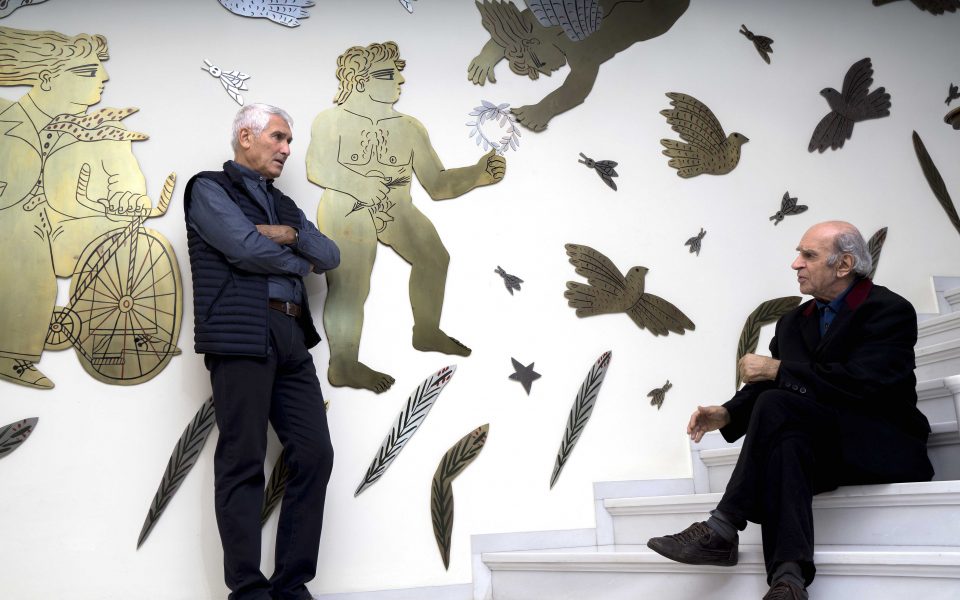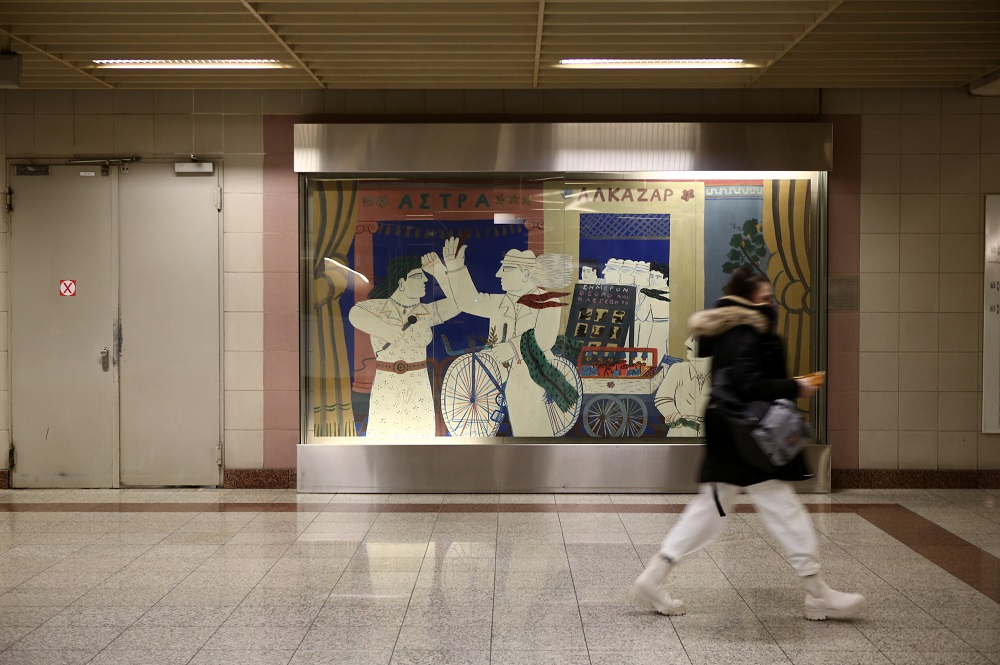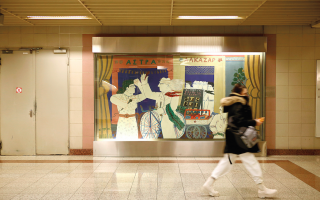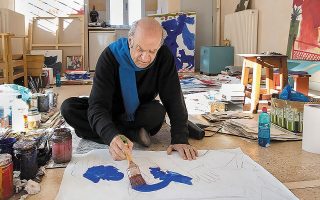Farewell to a painter of ‘contagious’ optimism

“These figures I’m painting right now are holding flaming swords like the Byzantine saints. But they are outlandish creatures, figments of my imagination, which, however, came from dark churches. I like a mass of red or blue, but not in abstract. I want color or lines to symbolize something. This is why the figures I draw are broken up and live among the flowers. Perhaps they are dead.”
Alekos Fassianos, who died on Sunday at the age of 86, wrote these lines in 1964. He was 29 years old at the time and they held the key to his summary of the people and things that had influenced his art.
At a later stage of his life, according to art historian and friend Efi Agathonikou, Fassianos described artists when young as “a river close to the source.”
“It is running at full strength, sweeping everything in its wake: stones, wood. But as the river moves along, it gradually calms down and flows more serenely,” he once told his friend.
Fassianos had stopped drawing and painting in the last couple of years of his life and the last of the many exhibitions of his work was in 2019, at the B&M Theocharakis Foundation. Titled “Alekos Fassianos – Vangelis Chronas: 30 Years of Friendship,” the show was a combination of art by the former and poetry by the latter, which he helped put together in cooperation with curator Takis Mavrotas.
“He loved poetry and poets, and he took inspiration from their work,” his daughter, Victoria Fassianou, tells Kathimerini. Louis Aragon, Andreas Embeirikos, Odysseas Elytis and Nikos Karouzos were just a few of his poet friends. His intimacy with them and with their work – along with the writings of C.P. Cavafy, Guillaume Apollinaire, Yves Navarre and Costas Tachtsis – also resulted in some beautifully illustrated publications.
Illustration was just one of the many facets of Fassianos’ creative output. Apart from drawing, painting and engraving, he was also prolific in the applied arts, designed sets and costumes for numerous plays, designed many art publications and illustrated a plethora of literary publications.

“He was not just a painter; he was a man who was involved with everything we call ‘artistic developments.’ But it was the vision called Greece that brought his work together. He was inspired by Greek culture from a human-centric perspective, but also by its people, the simple folk,” says Agathonikou.
“Alekos was an artist who painted what he saw, what he experienced. He didn’t want to pursue European trends, even though he studied them,” comments the art historian.
“As an artist, he felt that he had to do what was in his heart. Ancient and Byzantine history and art were such elements that he externalized. His flat figures are taken from ancient Greek lekythos vases and the gold ‘lights’ from Byzantium. He also observed the world around him very closely and tried to depict the everyday lives of people. He accomplished this in a manner that was both poetic and original,” she adds.

Even on the gloomiest day, you will find some joy at the Metaxourgeio metro station in central Athens in Fassianos’ large-scale piece “My Neighborhood’s Myth,” an homage to the area where he grew up and to post-World War II Athens.
“He really wanted his art to be everywhere, not just in the homes of the rich. This is why he drew constantly while hanging out at his favorite cafes and gave these drawings to his friends,” says Agathonikou.
“He tried to adopt a more literal style at the start of his career, but was liberated once he discovered the single stroke, which resembles a child’s drawing. He admired clarity and tried to work with as few movements as possible so that the result had a sense of simplicity and childlike innocence. The optimism exuded by his work is contagious.”





